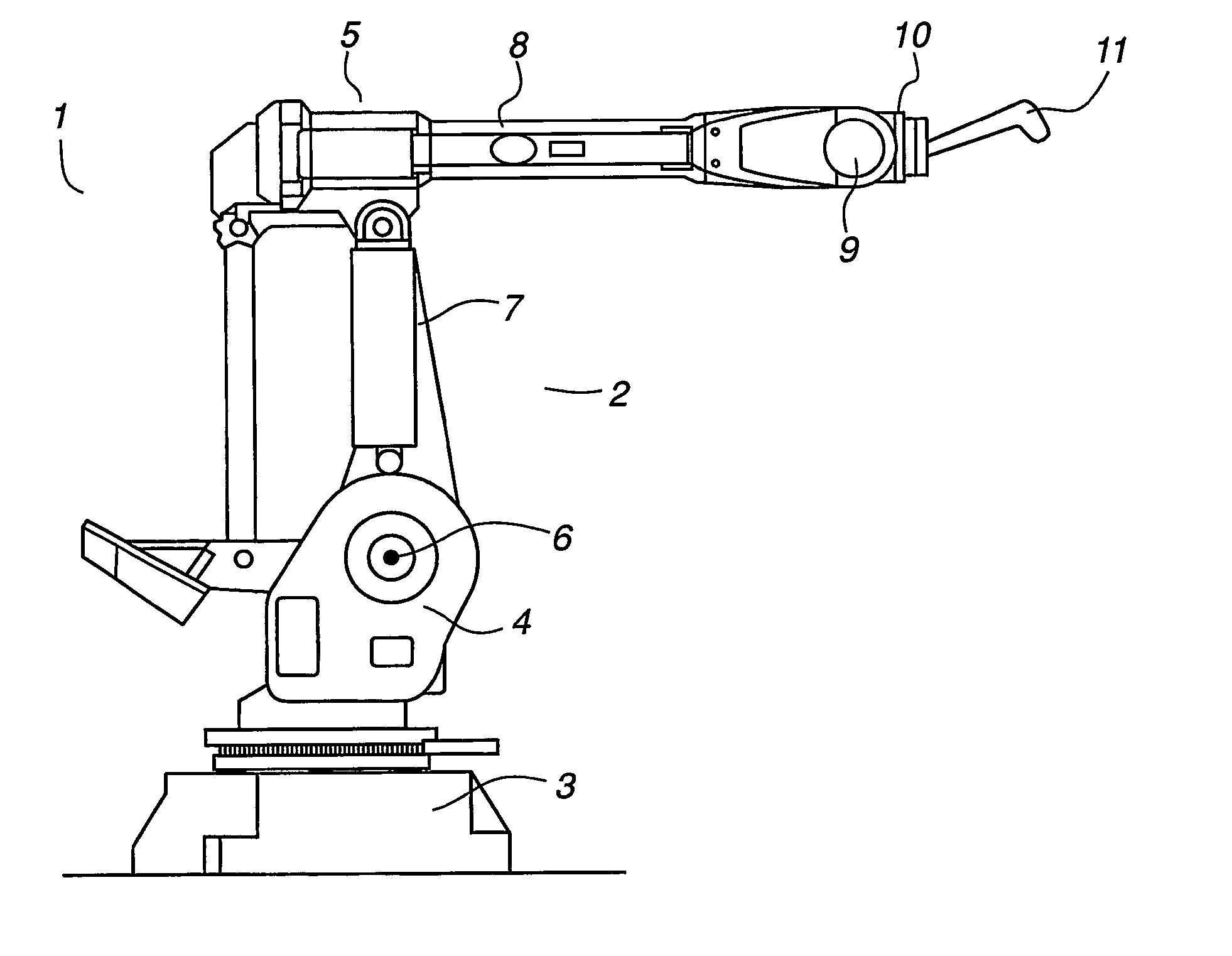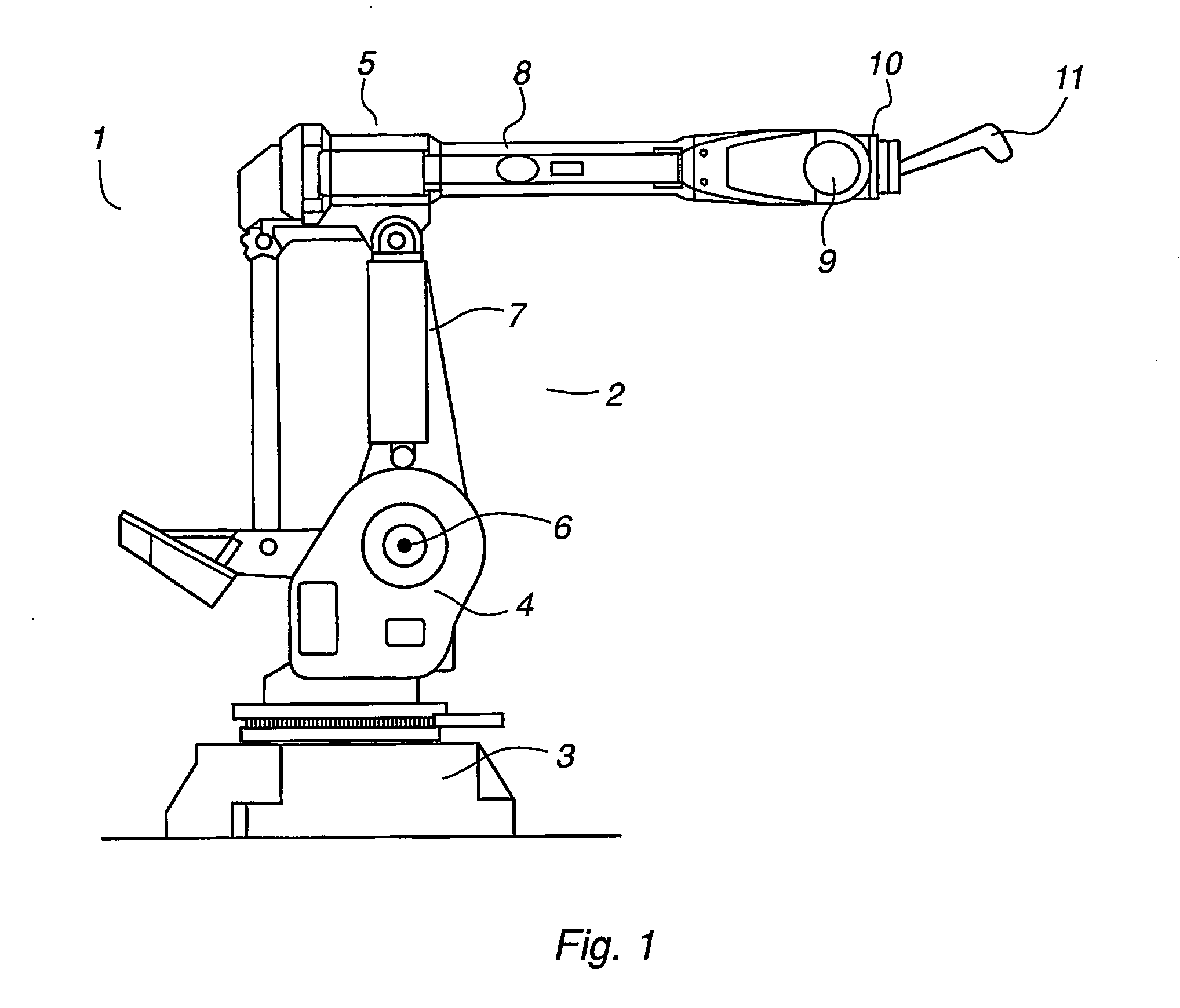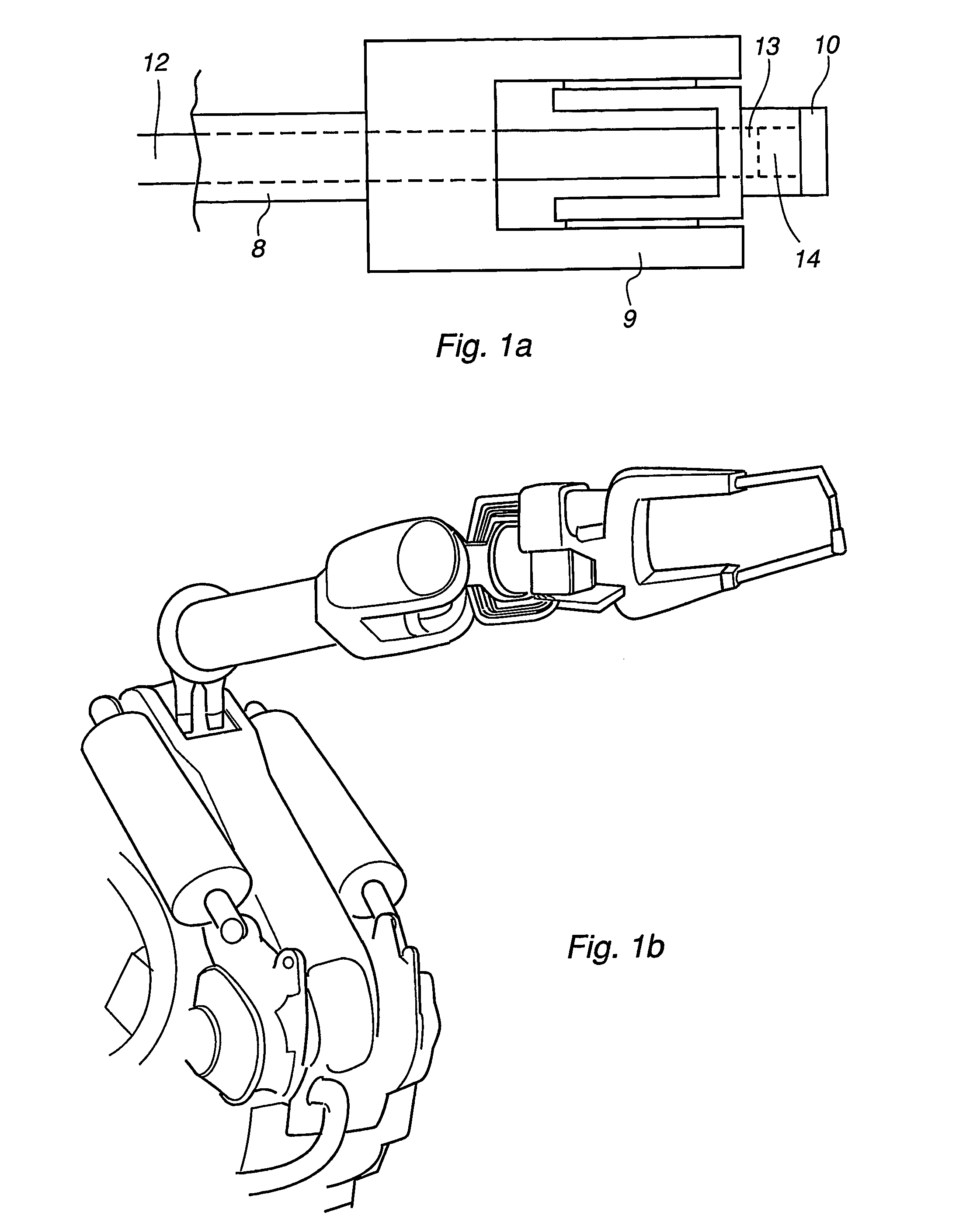Industrial robot
- Summary
- Abstract
- Description
- Claims
- Application Information
AI Technical Summary
Benefits of technology
Problems solved by technology
Method used
Image
Examples
Embodiment Construction
[0039] The invention relates to an industrial robot and the invention is exemplified in FIG. 1 by a six-axis robot 1 comprising a manipulator 2 with a control system (not shown). The manipulator 2 exhibits a robot foot 3, a stand 4, and a robot arm 5. The stand 4 is rotatably arranged on the robot foot 3. The robot arm 5 is rotatably arranged on the strand at a joint 6. The robot arm 5 comprises at least a first arm part 7 supporting a vertically oriented, rotating upper arm 8 as well as a wrist 9, which are rotatably arranged in relation to each other. At its free end, the upper arm 8 supports the wrist 9, which comprises a turning disc 10 provided with a robot tool 11 where the wrist 9 and the turning disc 10 are rotatably and bendably movable in relation to each other.
[0040] A cable harness 12 is drawn by its first end 13 through the upper arm 8, through the wrist 9 and up to the turning disc 10, which is shown in FIG. 1a. At the first end 13 of the cable harness, a body 14 acco...
PUM
 Login to View More
Login to View More Abstract
Description
Claims
Application Information
 Login to View More
Login to View More - R&D
- Intellectual Property
- Life Sciences
- Materials
- Tech Scout
- Unparalleled Data Quality
- Higher Quality Content
- 60% Fewer Hallucinations
Browse by: Latest US Patents, China's latest patents, Technical Efficacy Thesaurus, Application Domain, Technology Topic, Popular Technical Reports.
© 2025 PatSnap. All rights reserved.Legal|Privacy policy|Modern Slavery Act Transparency Statement|Sitemap|About US| Contact US: help@patsnap.com



